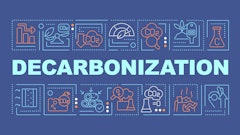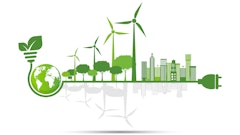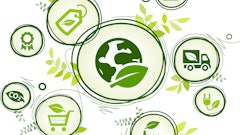
An organization’s supply chain represents a significant opportunity to reduce greenhouse gas emissions (GHG) while also streamlining and strengthening logistics operations locally, nationally and globally.
Since the waning days of the pandemic, organizations have invested heavily to enhance the resiliency and readiness of their supply chains. With COVID-19 firmly in the rearview mirror, organizations have been turning their attention to improving sustainability. Recent research by Horvath found that companies have earmarked 27% of total capital investment to environmental sustainability initiatives; and in general, Companies plan to reach “net zero” in emissions in nine years. Because of its ability to impact nearly all facets of logistics, sustainable procurement offers organizations the best of both worlds: helping improve the environment and lower operating costs.
Key Benefits of Sustainable Procurement
The importance of better environmental stewardship has increasingly become an important topic in the U.S. A Pew Research survey found that 69% of Americans favor having the U.S. take steps to become carbon neutral by 2050. Sustainable procurement can play a vital role in achieving that goal, but it also benefits organizations in four other important ways:
- Reduced costs and supply chain efficiency improvements. Sustainable procurement empowers decision-makers and employees to assess, identify and implement cost-savings initiatives within the organization’s logistics operations. In our experience, we have seen organizations lower logistics costs by 15 to 20% and sometimes more through reduced fuel costs, better optimization and increased general efficiency which ultimately improves key metrics, such as order cycle times, inventory turns and freight cost per unit.
- Superior alignment among supply chain partners. Sustainable procurement requires that all partners be aligned with common goals to be effective. Partners collaborate to set concrete performance measures and a well-founded implementation schedule to achieve sustainability targets. Even partial alignment is better than no alignment.
- Increased environmental awareness with key stakeholders. Once sustainability initiatives begin producing desired results, organizations can communicate those achievements and build goodwill with customers, supply chain partners, industry and community leaders and local and national regulators.
- Improved legal risk mitigation. Environmental laws and regulations are here to stay. A proactive sustainable procurement program helps organizations identify applicable rules and regulations and implement the necessary policies and procedures to mitigate legal risk and ensure compliance with various regulatory requirements.
Managing supply chains is already tricky. Supply chain leaders must deftly balance the needs of customers and vendors, while simultaneously ensuring smooth organizational operations and retaining employees. Sustainable procurement adds several other elements into the mix, from fulfilling regulatory requirements to teaming with vendors who prioritize minimizing their environmental impact.
To succeed, leaders must embed sustainable procurement throughout the organization. An interdisciplinary team (logistics, plant/property management, human resources, accounting, to name a few) should be involved. This interdisciplinary team will create a clear road map that identifies material issues that impact sustainable procurement, but also establishes and oversees the strategy, tactics, key performance indicators and process improvement initiatives to proactively identify and anticipate risks that could impede the achievement of these objectives.
Here are several areas on which leaders should focus, and crucial questions that need to be answered:
- Regulatory compliance: Has the organization identified all data that must be collected today and, in the future, to be in compliance with the different regulators? Is there a process to track regulatory changes as they occur?
- Procurement processes: Does the organization have an effective process in place to identify, contract with, and monitor the progress and compliance of its procurement partners?
- Data capture and analysis: Does the organization have capable digital tools to collect, analyze and distribute sustainability KPIs to ensure accurate and timely reporting?
- Organizational roles and responsibilities: Has the organization identified the right people and determined their roles and responsibilities going forward in meeting sustainable procurement goals?
That analysis provides decision-makers with the necessary information to design an effective system that provides optimal data flows, feedback loops, calculations and ongoing assessment of sustainable procurement programs. Decision makers should focus on five elements in building an improved sustainable procurement program:
- Collect current state data.
- Conduct measurements to understand the current and desired states.
- Test the system for accuracy and resiliency.
- Report on the connections between financial and nonfinancial sustainability.
- Communicate current and forecast performance to key stakeholders.
Here’s the bottom line. Global supply chains contribute the majority of GHG emissions, and in some industries represent 86% of an organization’s emissions. A thoughtful, integrated sustainable procurement program can be a difference maker in helping an organization reduce its environmental impact, strengthen its reputation, reduce costs and advance our world to a sustainable future.


























